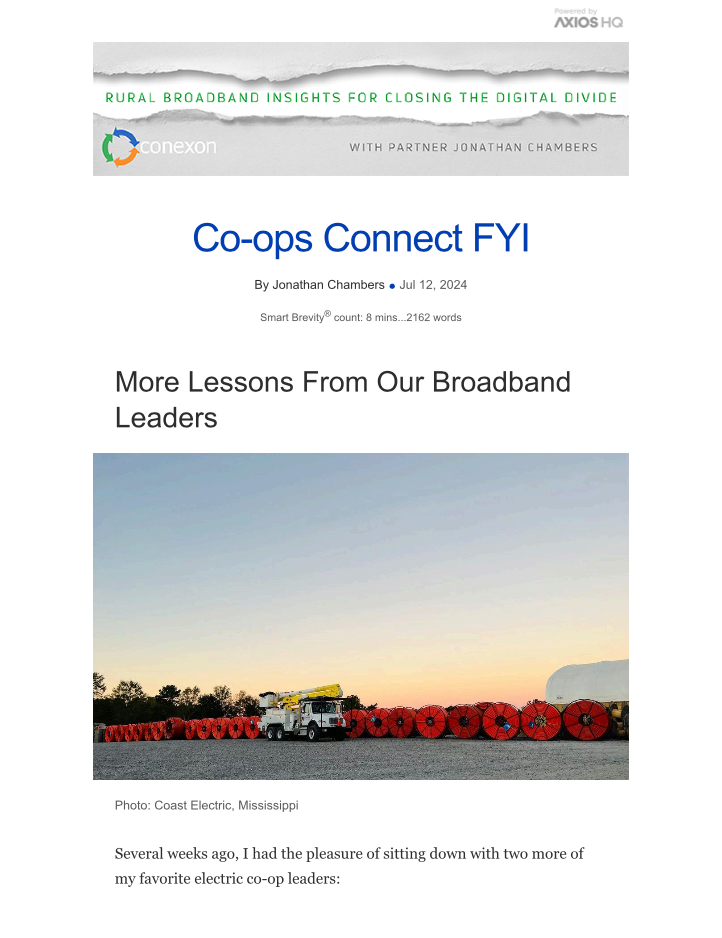More Lessons From Our Broadband Leaders
July 12, 2024
Several weeks ago, I had the pleasure of sitting down with two more of my favorite electric co-op leaders:
- Wendy Sellers, President/CEO of Washington EMC, Georgia
- Ron Barnes, President/CEO of Coast Electric, Mississippi
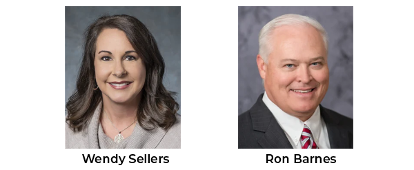
This conversation was the second in Conexon’s summer webinars, where we focus on the role of electric co-ops in delivering broadband access to 100% of members across rural America.
We talked about broadband challenges and achievements, from the nuances of different government funding programs to project milestones to community impact and more. I recommend listening to the entire recording; you won’t be disappointed. (Request the webinar recording)
In their own words, here’s just the start of what we can learn from Wendy and Ron.
On Funding Program Challenges
“There’s a lack of information at the state and the federal levels on how these grants can help and work best on the local level. Just because there is a funding mechanism does not mean it’s funding everything you need to get these projects done. If you really want the money to make a difference, listen to the people who are building these networks. That is still a problem, and it’s going to continue to be a problem. Regulation can sometimes get in the way of progress.
“RDOF was meant to be a revenue subsidy to serve rural areas where there’s not a tremendous profit to be made with only five meters per mile of line. Plus, RDOF is spread out over 10 years. It’s not a lot of money coming in at once. When you’re building and you’re building fast, you need cash. You’ve got to have resources to build. If policymakers want to see the broadband service maps filled in across rural areas, you have to have money to build, and you’ve got to do it quickly. We spent a lot of time trying to educate and communicate, sometimes successfully, sometimes not so successfully.”
Wendy Sellers
“We also participated in the RDOF auction. I thought it worked pretty well for Mississippi, but the electric power associations only received 30% to 60% of the money allocated by the government. Coast Electric has also been preliminarily allocated a Capital Projects Fund grant, but we’re still waiting for the money. If you add those together, it’s about $20 million of our $155 million project. The frustration we have is that while we’re waiting for these grants, the interest rates continue to affect us, as we continue to borrow to continue to be able to build.”
Ron Barnes
“I have tried to tell this to state officials: You understand the money is going to member organizations. That is the people who are borrowing money in order to finance the construction of their fiber network. They’re the people you can give the money to. Those are your constituents. They’re the residents of the cooperative. They own the network. That is, they own the cooperative, and the cooperative owns the network – so they own the network. It’s as close as you’re going to get to giving money directly to the people who benefit from the service. Why wouldn’t you want to give money to your constituents?”
Jonathan Chambers
On Funding Program Successes
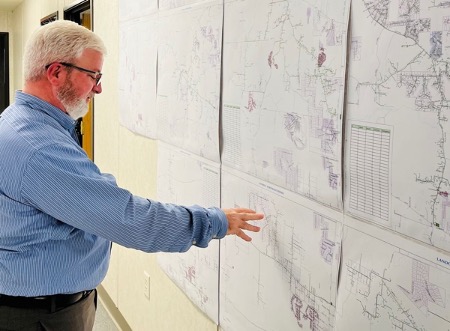
Photo: Coast Electric, Mississippi
“I’ll never forget this. The pandemic hits. Our statewide leader tells us there’s money available for broadband but we’re going to have to commit to some kind of match to make it work. We came up with the idea that each of the co-ops would put together a broadband project in our own area that we felt we could get done by the grant deadline of December 30, 2020.
Now, you have to think about it. It’s the middle of summer 2020. We present our plan to the legislature and tell them, ‘If we can build this and we can agree to match 50%, will you commit the other 50% up to the $75 million available through the CARES Act?’ We ended up getting three levels of grants from it: an initial grant, then secondary and tertiary grants because we were the only ones that applied for the money. A total of $74 million of the $75 million CARES Act funding in Mississippi went to the electric power associations. And we all built it out by the deadline of December 2020. We didn’t want to give the money back, so we said we’ll just do what it takes.”
Ron Barnes
“The way the CARES Act worked was folks stepped up to the obligation, got the work done in a short period of time, and were awarded the money. What was accomplished with CARES Act funding is in sharp contrast to the BEAD program still hanging out there, not yet kicked off as far as the money that should go to rural construction for unserved and underserved locations in the country. It will be past three years before any of the BEAD programs get going. I understand the old adage of measuring twice to cut once. But sometimes you just have to build and then fix your mistakes; otherwise, you spend all your time measuring.”
Jonathan Chambers
“Several Georgia co-ops applied for the ARPA grants. Not all received a grant, but Washington EMC did, a little over $14 million. Any offset that the state gives us in grant funds relieves debt pressure from our members. We are a member cooperative. We don’t have shareholders. Our funding comes directly from the people we serve.”
Wendy Sellers
On Project Timelines
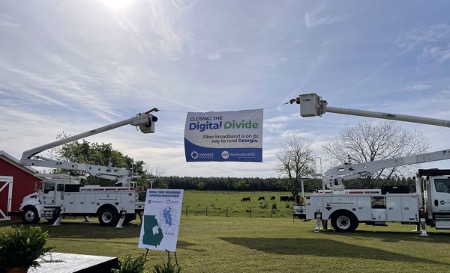
Photo, Washington EMC, Georgia
“At our announcement three years ago, we told everyone our fiber network project would be done in three years. Our onsite project manager just told me we are doing out last two splices. We’ll be finished today! We actually did it in a little less than three years because the true start of construction began closer into the fall. I can’t believe it. I knew we’d get it done, but it has been three fast years from start to finish.”
Wendy Sellers
“Our Board of Directors made the decision in June of 2020 to do a pilot project with CARES Act funding if we could get it. We would go into the most rural part of our territory that had no service whatsoever, and we would build out enough to get started and make a difference. We were off and running after that. That pilot project quickly turned into a full-scale build, which we estimated would take six years.
“We have now built out almost 95% of our service territory today in less than four years. If only every program could work as efficiently as the CARES Act. That money was allocated from the legislature in June 2020. With Conexon’s help, we went to work August 1, connected our first broadband subscriber November 2, and had about 500 accounts connected by December 30.”
Ron Barnes
On Fostering Growth
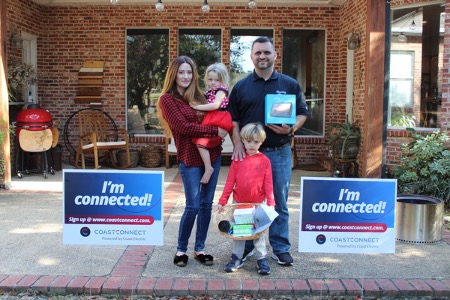
Photo: Coast Electric, Mississippi
“When we were looking at whether to go into the broadband business, the studies kept showing that about 30% of our population had no good choice for high-speed internet. It would have been easier just to say, ‘Let someone else do it.’ But for that 30%, our area was never going to grow. We were never going to be able to attract people from other areas without internet service. The ability to grow in areas that we haven’t grown in years is the reason electric co-ops go into broadband. The internet is the tool that gets your electric system to grow.”
Ron Barnes
“Washington EMC is the poster child for the rural electric cooperative. We are in a very rural area in east central Georgia and serve about five meters per mile of line. There’s a lot of agricultural industry and a lot of mining industry. People live here and like to stay here, but we are losing a lot of our younger generation who have grown up here but need connectivity and before this project, could not get it. We try to keep our youth and also bring in growth, and this fiber project is helping that.”
Wendy Sellers
On the Power of Collaboration
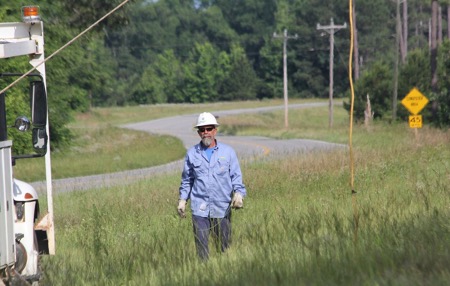
Photo: Washington EMC, Georgia
“One model does not work for every cooperative. EMCs in our state have evaluated whether they want to be in the broadband business in some way – with no pressure from one EMC to the next to make those decisions. The questions considered are: What form of business structure works? Does the co-op want to form a subsidiary and run its own broadband company? Does the co-op want to find a partner to work with? Every co-op makes those evaluations, and it’s being done differently all across our state.
“In the last three years, the EMCs in Georgia have built a tremendous amount of fiber. We are serving areas that have never had service before. Everyone — including our state legislature — realizes that the co-ops can get this done. If you will give us space and let us go to work, we can build these fiber networks. That’s what we do. We build infrastructure to serve our members. It’s amazing how much we’ve gotten done.”
Wendy Sellers
“We don’t throw around terms like miracle very often, but I really do believe that Mississippi was a miracle. There were only a few systems for which broadband was even on the radar back in 2018. Fast forward to January 2019 when the Mississippi Broadband Enabling Act was passed. Our statewide leader believed the legislation would affect only five or six electric co-ops.
“I’m proud to say that today, 17 of the 25 electric co-ops in Mississippi are actively in the broadband business. We’re now serving over 200,000 Mississippians from the north part of the state to down here on the Gulf Coast. It has opened up such a huge opportunity for all of our members. Now we’re growing in those really rural areas that we had not been growing in years.”
Ron Barnes
On the Electric Cooperative Mindset
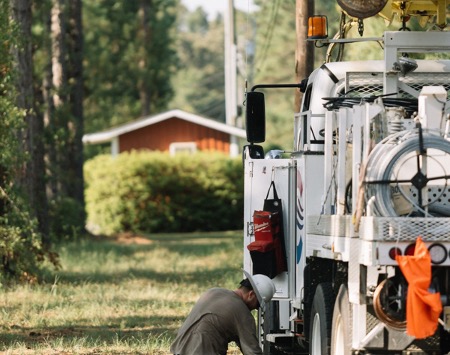
Photo: Coast Electric, Mississippi
“People, especially those who work for co-ops, ask me often, ‘What business are you in?’ They think I’m going to say ‘electric’ or ‘fiber internet.’ I tell them all co-ops are in the quality of life business. If you can do something to improve the quality of life for your members, that, to me, is what being a co-ops is about.
Ron Barnes
“One of my board members said it best: ‘85 years ago, there was a group of men sitting in a room worried about how they were going to bring electricity to this area and reach all of the membership. They made a big decision to form the cooperative. Now, it’s our turn to make a decision for the next generation, and we’re going to do it.’”
Wendy Sellers
“There is a growing number of co-ops CEOs, boards and senior personnel that have now built hundreds of thousands of miles of fiber-optic network across the country. This business is not for the faint of heart, but I’m awfully proud of what our folks have done and I’m awfully proud of the relationships that we have established with our electric cooperatives.”
Jonathan Chambers
On the Future of Broadband
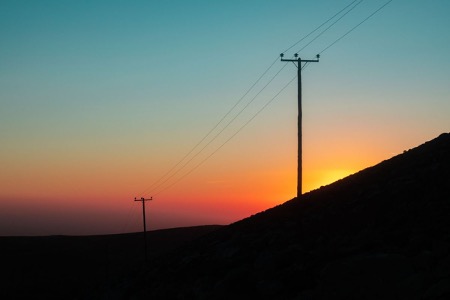
“We always say that when we build a fiber network, we’re building it to be integrated into the electric distribution network so it has a use for smart grid: for downline SCADA devices, for voltage VR control, for management of the electric system. Those smart grid applications are going to profilerate. They may not all be here yet, but I think the electric co-ops around the country that have undertaken these projects are going to be ahead when it comes to managing their electric systems.”
Jonathan Chambers
“We’ve already connected all kinds of downline devices that are making our electric system so much more reliable. If there is an outage, we have devices that are isolating that outage to a small handful of members as opposed to a thousand. That’s all been done because of fiber. There are so many benefits outside of just providing internet.”
Ron Barnes
“You have to continue to keep the mentality that we are here to serve the membership in whatever for they need to preserve that quality of life. This is my 11th year as manager, and this is by far one of the biggest and best accomplishments as my time as CEO. I’ll be proud to retire one day and know that we got it done.”
Wendy Sellers
Ready for More Insights?
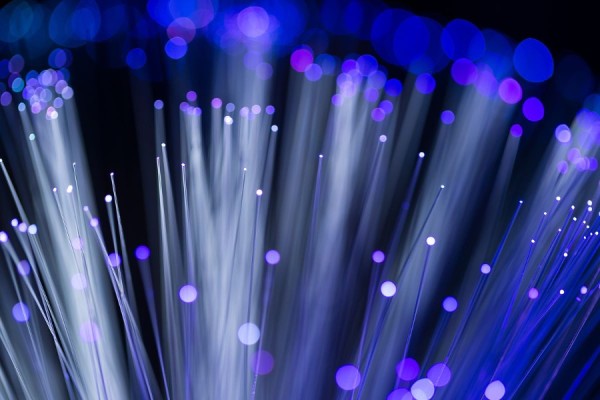
Our final webinar in our Summer series is Thursday, July 18 at 10:00 A.M. CT. I’ll be joined by two more ground-breaking co-op leaders:
- Jarrod Campbell, Osage Valley Electric Cooperative, Missouri
- Julius Hackett, Tri-County Electric Cooperative, Florida
In addition to sharing their success stories, Jarrod and Julius will share their insights and learnings in choosing a broadband model and the importance of building to serve 100% of their members with fiber to the home.
I hope to see you there. Register now.
